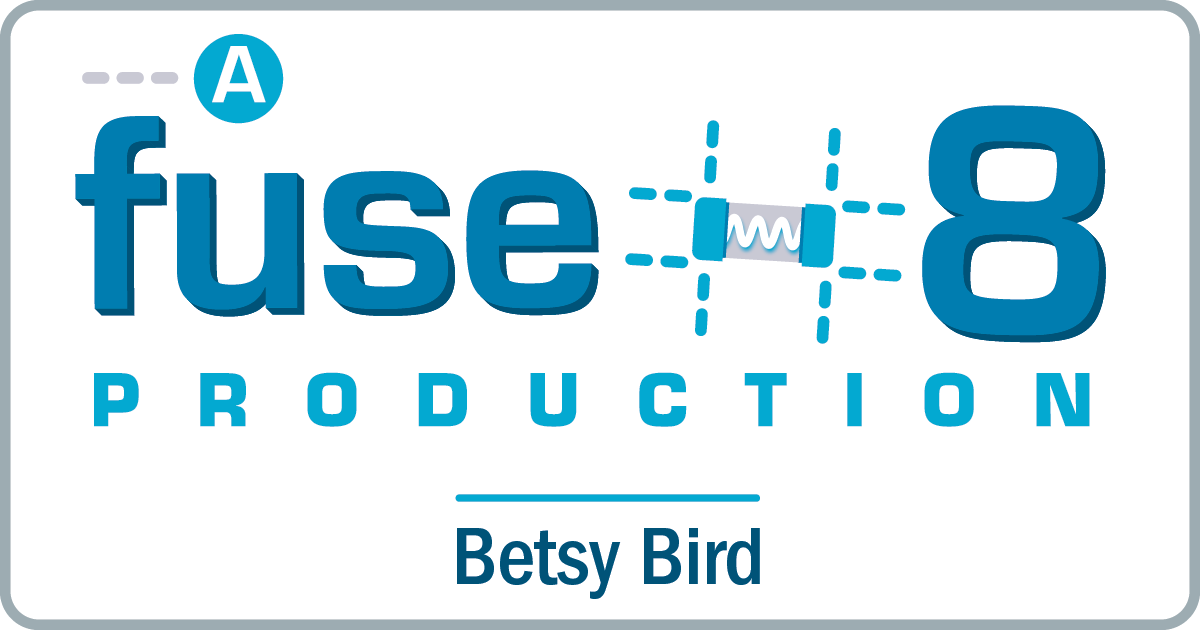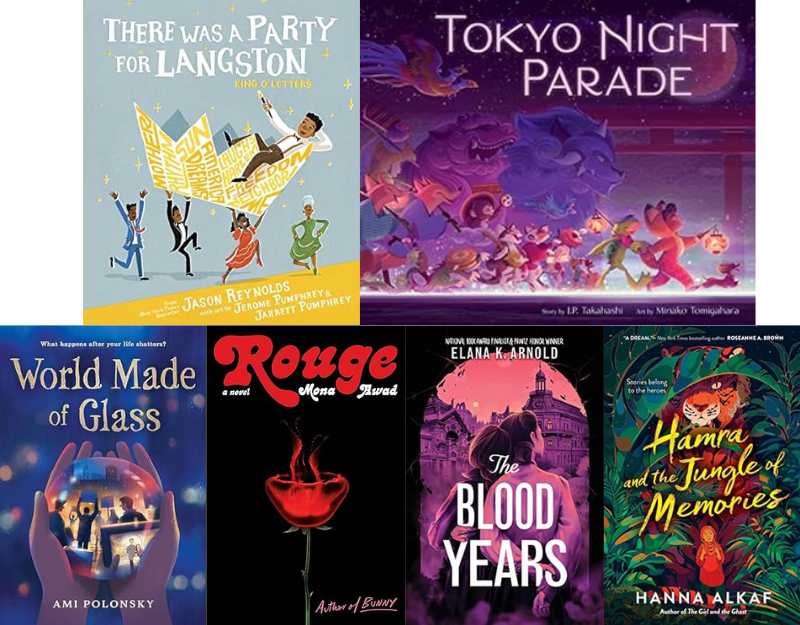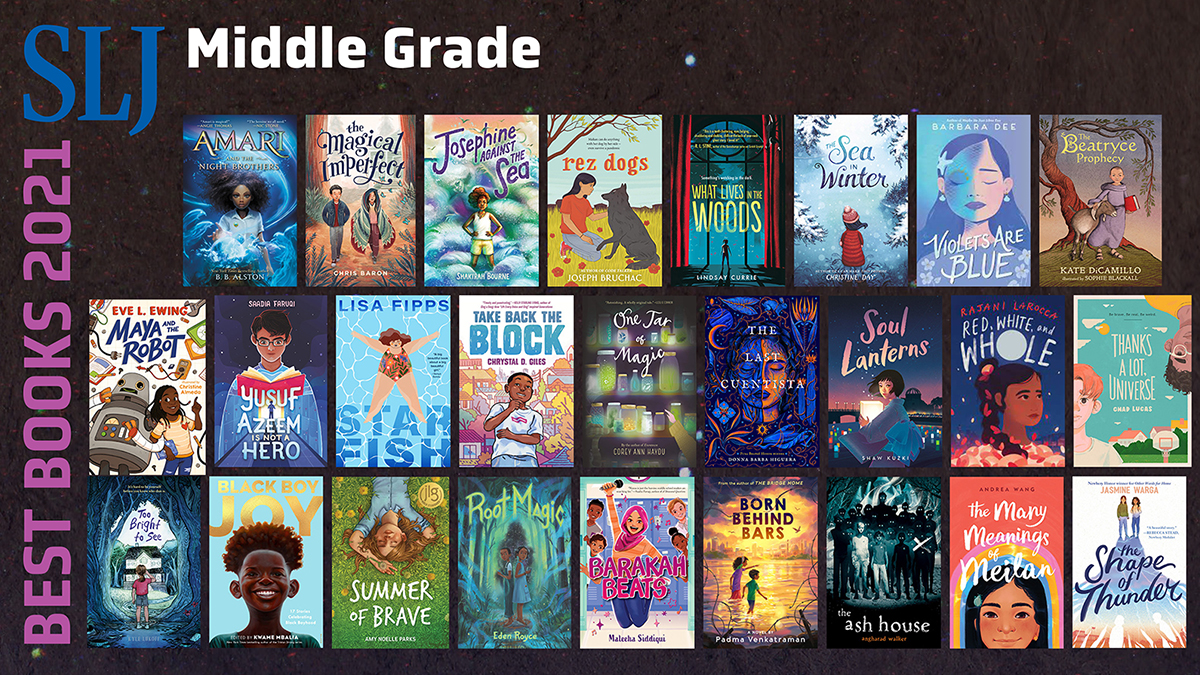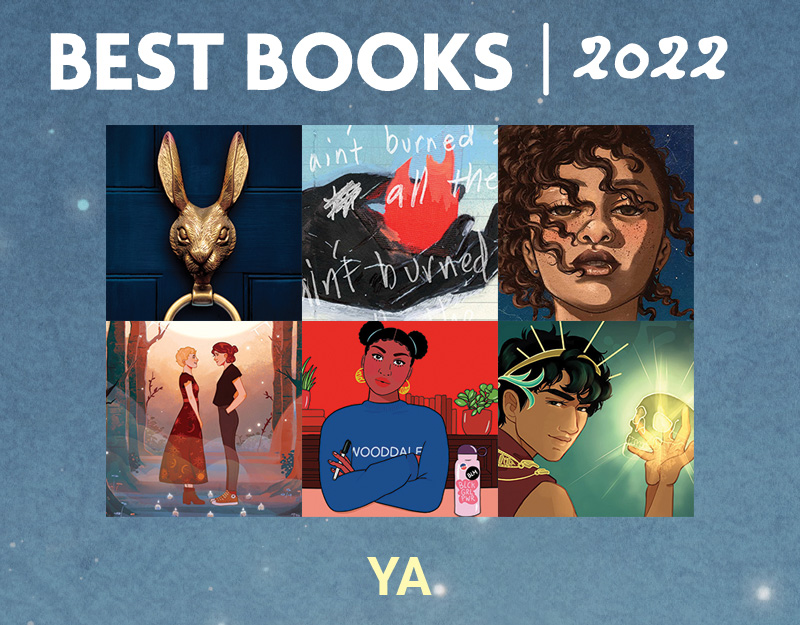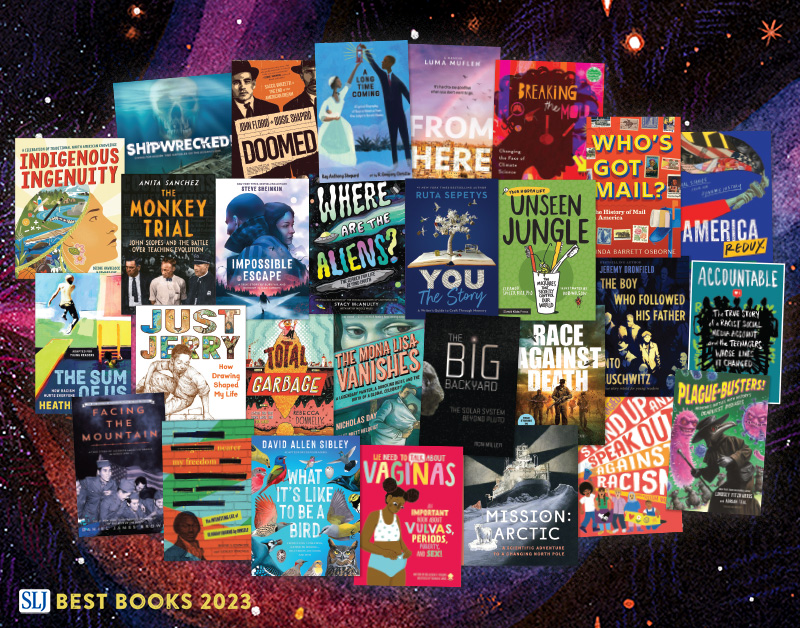The Fast-Paced, Page-Turning Adventure Series That’s a Celebration of African Cultures: Bernard Mensah Discusses “Kwame’s Magic Quest”
Last year I was getting ready to start putting together my 31 Days, 31 Lists posts for 2024. I knew I hadn’t seen everything out there, but I get a fairly good, fairly rounded sense of what’s being published. Still, there are two lists I await eagerly every year: The New York Public Library best book lists for kids and the Chicago Public Library best book lists for kids. And lo and behold, when I saw CPL’s Best Fiction for Younger Readers 2024 I saw an early chapter book, first in a series, that I had never, ever seen. Not anywhere else:

The “Kwame’s Magic Quest” series intrigued me for a number of reasons. First and foremost, I was fascinated by how author Bernard Mensah was able to back so much world building into such a tiny package. In this series a boy named Kwame attends a magic school. Along the way he discovers his extraordinarily special role there while a friend is slowly drawn to the dark side. Second, the book is set in Ghana. Last year numerous other books also were Ghana-influenced, and this caught my attention.
ADVERTISEMENT
ADVERTISEMENT
This year, Mr. Mensah is continuing the Scholastic Branches series with Bite of the Kaba Lagoon (out today!) and I got a chance to talk to him about the series and to sate my curiosity fully.
Betsy Bird: Bernard! So good getting a chance to talk to you today! And congrats on the sheer success of the Kwame’s Magic Quest series! Let’s start at the very beginning here. Tell us a bit about where the idea of this series came from in the first place. What inspired you to think it up?

Bernard Mensah: Thank you so much! The idea for Kwame’s Magic Quest came from three central questions I kept turning over in my mind. First, how do I connect my own kids to their heritage in a way that’s engaging and meaningful? Second, how do I excite any child—whether Ghanaian or not—about African cultures and history? And third, how do I distill the vastness of Africa, with its diverse traditions, into stories that fit within the pages of a book for newly independent readers? Those questions became the foundation of Kwame’s Magic Quest. It took nearly a year of writing, revising, and tweaking to strike the balance between fast-paced, page-turning adventure and a celebration of African cultures. The result is a series that blends magic, action, and heritage in a way I hope captures the imagination and curiosity of young readers everywhere.
BB: Part of what’s so intriguing about the books is that they’re really perfect for emerging readers who want the sophistication of a kid going to a magic school but aren’t ready for something 200+ pages long. Did you always envision the books as this length and age range?
Bernard: Yes, the length and age range were intentional from the start. They’re also a perfect fit for what makes a Scholastic Branches book so special. I wanted to create something accessible for younger readers just stepping into chapter books, while still delivering the excitement and depth they might associate with longer fantasy stories. There’s a real need for this kind of story—an entry point for kids who are curious about magic and adventure but aren’t quite ready for larger books like Harry Potter. And selfishly, since my own children were at that stage on their reading journeys, having a series I could share with them that highlighted African cultures and magic was a must.
The shorter format also pushes me as a writer. With fewer words, every sentence matters, and every scene must serve the story. It’s a challenge, but it’s also rewarding to see how much can be packed into a concise, engaging narrative. Every draft starts over the word-count limit, and then there’s the hard work of trimming it to size.
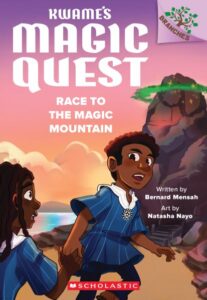
BB: There’s an art to winnowing down a complex plot into its most essential elements. You essentially have to world build in a scant 85 pages (and that’s not including the pages that are dedicated just to the illustrations). So….. how? How do you do it? What’s the secret?
Bernard: I won’t say I’ve perfected this yet—every book in the series teaches me something new. What really helps is focusing on the emotional core of the story. I start by identifying what the heart of each book is—whether it’s friendship, bravery, or self-discovery—and build everything around that theme. World-building details are woven in where they serve the plot or enhance the reader’s experience.
Illustrations play a huge role in this process. Knowing that certain details will be visually depicted allows me to focus the text on character emotions and dialogue. It’s about finding that balance between showing and telling, and working closely with the illustrator to ensure the visuals complement and expand the narrative.
BB: We’ll get to those illustrations soon, but with those kinds of limitations, you must have had ideas you couldn’t use or fit in. What’s something you thought you might originally have included in the series that fell by the wayside later?
Bernard: Oh, there are so many! One of the biggest ideas that had to be set aside was exploring other magic schools across Africa within the storylines of the first four books. I also envisioned diving into diverse magic systems that reflect the continent’s incredible range of traditions, but that’s something I haven’t managed to include yet. Another idea was delving deeper into the history of the Nkonyaa Tree and the origins of its magic. The tree’s back-story is one I still dream of telling, maybe in a future book or as a companion piece. For now, my focus is on telling Kwame’s story while leaving space for the world to grow in future story arcs.
BB: I’d be interesting in your thoughts on this next question. You see, last year there were at least four different books published for kids here in the States set in Ghana or Ghanaian mythology. Tell us a little bit about why you think Ghana is such a perfect fit for the American children’s literature market these days.
Bernard: Ghana has an incredibly rich cultural heritage, full of vibrant traditions, inspiring folklore, and unique historical narratives. The rise in books set in Ghana or featuring Ghanaian mythology reflects a growing appetite for diverse stories that offer fresh perspectives. There’s a universal appeal to the themes found in Ghanaian stories—community, courage, and connection—which resonate across cultures.

For American readers, these stories are an invitation to explore a world that feels both different and relatable. Whether it’s through the rhythms of a festival or the warmth of a family meal, Ghanaian cultures are accessible and inviting.
BB: Okay, now let’s talk about those illustrations. Personally, I think the art of Natasha Nayo provides the perfect complement to your storytelling. Did you know Natasha’s work prior to her time with this series? What do you think of the final product?
Bernard: Working with Natasha has been a joy. From the beginning, her artistic vision aligned perfectly with the heart of the series. I didn’t know her work before Kwame’s Magic Quest, but as soon as I saw her portfolio, I knew she was the perfect fit.
Natasha’s ability to bring the world of Nkonyaa School to life is phenomenal. Her art captures the magic, emotions, and vibrancy of the stories in a way that words alone can’t. Seeing the final product is like watching my imagination come alive on the page. I couldn’t be happier with the collaboration.
BB: Now the really big question: How many books in the Kwame’s Magic Quest series will there be? Or could it be like Magic Tree House and just be endless?
ADVERTISEMENT
ADVERTISEMENT
Bernard: Right now, there are four books in the series introducing Kwame and his friends. The fourth book lays the groundwork for a super exciting arc I hope to write next. But for that to happen, we need readers to pick up these initial books, read them, and please leave ratings and reviews. As a new author, those ratings, reviews, and interview opportunities like this one are what make more books possible, so thank you!
The world of Kwame’s Magic Quest has endless potential for growth. With thousands of African magic traditions and systems to explore, there are so many stories waiting to be told. So I really hope Kwame’s Magic Quest will follow in the footsteps of Magic Tree House or Dragon Masters!
BB: Finally, what else are you working on these days? It doesn’t have to be children’s literature related either.
Bernard: I’m exploring a few new projects, including another children’s book series blending adventure and African mythology. I’m also working on a nonfiction picture book and experimenting with middle grade. Beyond books, I’ve been collaborating on projects that spotlight African artists and stories, expanding my mission to celebrate diverse voices in storytelling. There’s so much on the horizon, and I’m excited for what’s next!
Big thanks to Bernard for taking the time to talk to me today. Thanks too to Abigail Jordan and the team at Scholastic for helping to put this together. The lastest book in the “Kwame’s Magic Quest” series (#3!) is out today and is called Bite of the Kaba Lagoon, but don’t deny yourself the earlier books as well! It’s a great series and one that is well worth discovering.
Filed under: Interviews
About Betsy Bird
Betsy Bird is currently the Collection Development Manager of the Evanston Public Library system and a former Materials Specialist for New York Public Library. She has served on Newbery, written for Horn Book, and has done other lovely little things that she'd love to tell you about but that she's sure you'd find more interesting to hear of in person. Her opinions are her own and do not reflect those of EPL, SLJ, or any of the other acronyms you might be able to name. Follow her on Twitter: @fuseeight.
ADVERTISEMENT
ADVERTISEMENT
SLJ Blog Network
9 Randomly Random Facts About CABOOSE
Recent Graphic Novel Deals, January 2025 | News
Goodbye for now
When Book Bans are a Form of Discrimination, What is the Path to Justice?
RA Tool of the Week: Teen Romance by Trope
Big Gretch Visits The Yarn!
ADVERTISEMENT

